Potrebujeme váš súhlas na využitie jednotlivých dát, aby sa vám okrem iného mohli ukazovať informácie týkajúce sa vašich záujmov. Súhlas udelíte kliknutím na tlačidlo „OK“.
ASTM E1255-09
Standard Practice for Radioscopy
Automaticky preložený názov:
Štandardná prax pre Radioscopy
NORMA vydaná dňa 1.7.2009
Informácie o norme:
Označenie normy: ASTM E1255-09
Poznámka: NEPLATNÁ
Dátum vydania normy: 1.7.2009
Kód tovaru: NS-41029
Počet strán: 11
Približná hmotnosť: 33 g (0.07 libier)
Krajina: Americká technická norma
Kategória: Technické normy ASTM
Kategórie - podobné normy:
Anotácia textu normy ASTM E1255-09 :
Keywords:
analog, detector, digital, display, examination, image, manipulator, processor, radioscopy, source, Automated procedures, Calibration--radiographic/radioscopic analysis instrumentation, Detectors, Information storage and retrieval, Manipulation system, Penetrant inspection, Performance--laboratory instrumentation/process, Radiation exposure, Radiographic examination, Radioscopic examination, Sources/radiation, X-irradiation, ICS Number Code 77.040.20 (Non-destructive testing of metals)
Doplňujúce informácie
| Significance and Use | ||||||||||||||||||||||||||||||
|
As with conventional radiography, radioscopic examination is broadly applicable to any material or examination object through which a beam of penetrating radiation may be passed and detected including metals, plastics, ceramics, composites, and other nonmetallic materials. In addition to the benefits normally associated with radiography, radioscopic examination may be either a dynamic, filmless technique allowing the examination part to be manipulated and imaging parameters optimized while the object is undergoing examination, or a static, filmless technique wherein the examination part is stationary with respect to the X-ray beam. The differentiation to systems with digital detector arrays (DDAs) is the use of an analog component such as an electro-optic device or an analog camera. Recent technology advances in the area of projection imaging, camera techniques, and digital image processing provide acceptable sensitivity for a wide range of applications. If normal video rates are not adequate to detect features of interest then averaging techniques with no movement of the test object shall be used. |
||||||||||||||||||||||||||||||
| 1. Scope | ||||||||||||||||||||||||||||||
|
1.1 This practice provides application details for radioscopic examination using penetrating radiation. This includes dynamic radioscopy and for the purposes of this practice, radioscopy where there is no motion of the object during exposure (referred to as static radioscopic imaging) both using an analog component such as an electro-optic device or analog camera. Since the techniques involved and the applications for radioscopic examination are diverse, this practice is not intended to be limiting or restrictive, but rather to address the general applications of the technology and thereby facilitate its use. Refer to Guides E 94 and E 1000, Terminology E 1316, Practice E 747, Practice E 1025, Test Method E 2597, and Fed. Std. Nos. 21 CFR 1020.40 and 29 CFR 1910.96 for a list of documents that provide additional information and guidance. 1.2 The general principles discussed in this practice apply broadly to penetrating radiation radioscopic systems. However, this document is written specifically for use with X-ray and gamma-ray systems. Other radioscopic systems, such as those employing neutrons, will involve equipment and application details unique to such systems. 1.3 This standard does not purport to address all of the safety concerns, if any, associated with its use. It is the responsibility of the user of this standard to establish appropriate safety and health practices and determine the applicability of regulatory limitations prior to use. For specific safety statements, see Section 8 and Fed. Std. Nos. 21 CFR 1020.40 and 29 CFR 1910.96. A1.1.1 Purpose—This annex is to be used in conjunction with Practices E 1255 and E 1742. It permits the use of and gives guidance on the implementation of radioscopic examination for materials, components, and assemblies, when specified in the contract documents. The radioscopic requirements described herein allow the use of radioscopy for new applications as well as to replace radiography when examination coverage, greater throughput, or improved examination economics can be obtained, provided a satisfactory level of image quality can be demonstrated. A1.1.2 Application— This annex provides guidelines for a written practice as required in 3.2 and 5.2.1 of Practice E 1255. Should the requirements in this annex conflict with any other requirements of Practice E 1255, then Annex A1 takes precedence. The requirements of this annex are intended to control the quality of the radioscopic examination and not to specify the accept/reject criteria for the object. Accept/reject criteria are provided in other contract documents. |
||||||||||||||||||||||||||||||
| 2. Referenced Documents | ||||||||||||||||||||||||||||||
|
Podobné normy:
Historická
1.12.2013
Historická
1.9.2010
Historická
15.10.2012
Historická
1.12.2011
Historická
1.11.2012
Historická
1.7.2009
Odporúčame:
EviZak - všetky zákony vrátane ich evidencie na jednom mieste
Poskytovanie aktuálnych informácií o legislatívnych predpisoch vyhlásených v Zbierke zákonov od roku 1945.
Aktualizácia 2x v mesiaci !
Chcete vedieť viac informácii ? Pozrite sa na túto stránku.


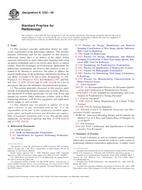
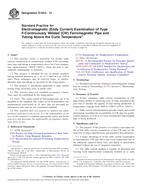 ASTM E1033-13
ASTM E1033-13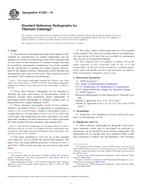 ASTM E1320-10
ASTM E1320-10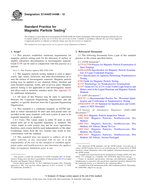 ASTM E1444/E1444M-12..
ASTM E1444/E1444M-12..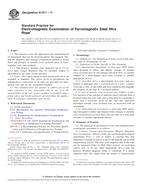 ASTM E1571-11
ASTM E1571-11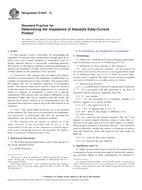 ASTM E1629-12
ASTM E1629-12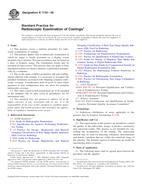 ASTM E1734-09
ASTM E1734-09
 Cookies
Cookies
